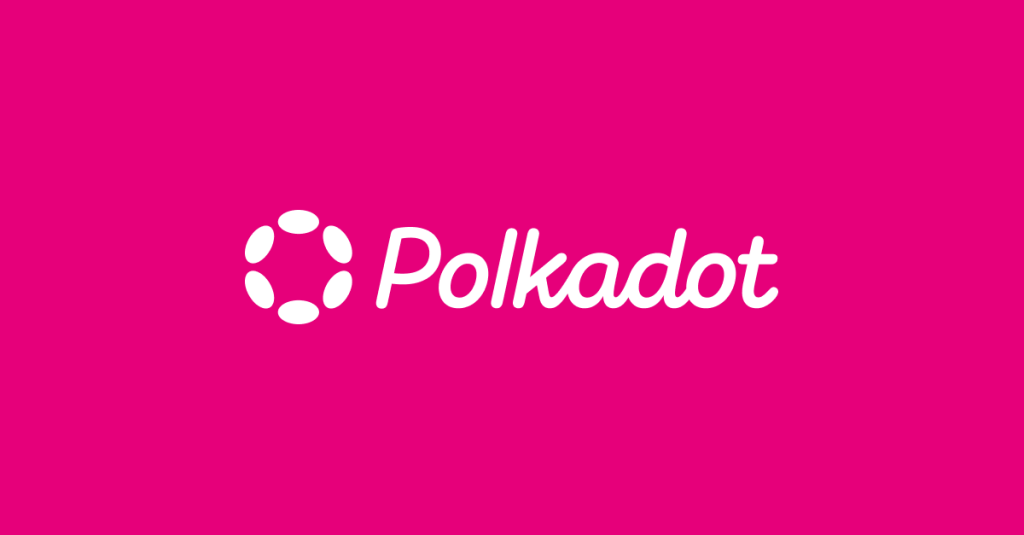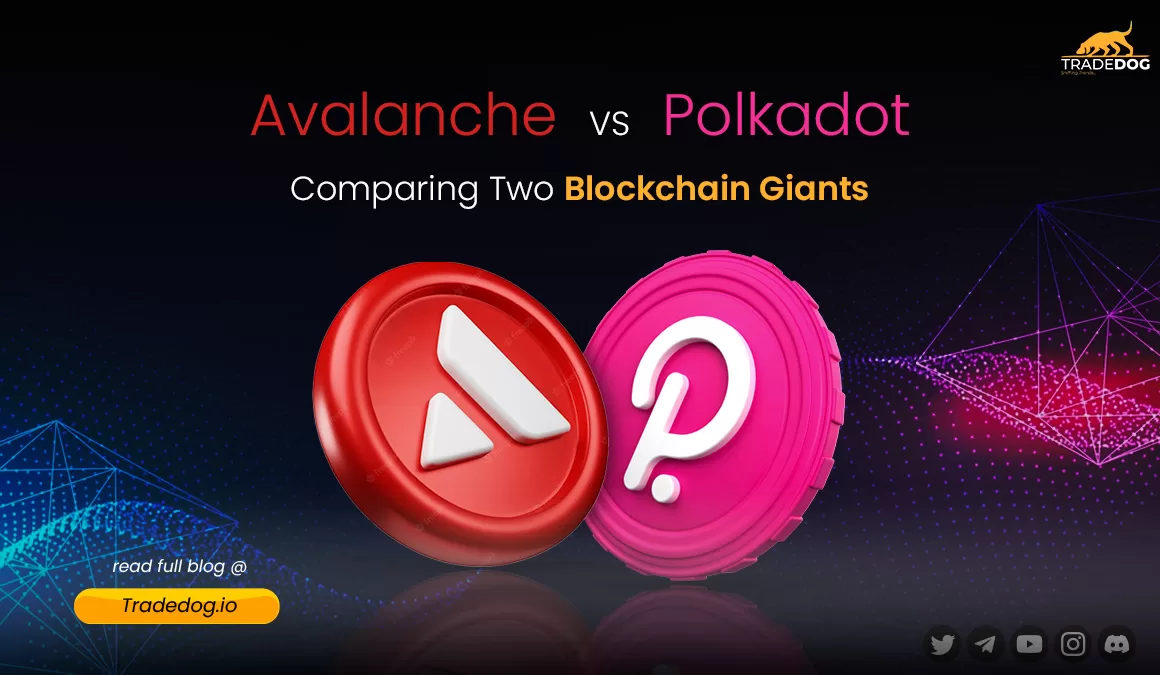Quick Links
- Overview of Avalanche
- Overview of Polkadot
- Avalanche Vs Polkadot: Consensus Mechanisms
- Avalanche Vs Polkadot: Transaction Speeds and Scalability
- Avalanche Vs Polkadot: Interoperability and Cross-Chain Compatibility
- Avalanche Vs Polkadot: Development Community and Ecosystem
- Avalanche Vs Polkadot: Conclusion
Blockchain technology has transformed the world of finance, and with ongoing improvements, it is expanding at an exponential rate. Avalanche and Polkadot are two of the most fascinating platforms in this arena, each with features and capabilities that have attracted the curiosity of developers and investors alike.
In this talk, we’ll compare and contrast these two blockchains, highlighting their essential features and benefits. Our goal is to give readers a thorough understanding of each blockchain, allowing them to make informed decisions about which one is best for their projects.
Overview of Avalanche
Avalanche is a blockchain platform that provides a combination of speed, scalability, and security. Its unique consensus technique, Avalanche Consensus Protocol (ACP), allows for near-instant transaction finality. Avalanche is a versatile platform that may be used for various applications because it supports smart contracts and decentralized apps (dApps).
Some of Avalanche’s noteworthy qualities are its high throughput capacity (up to 4,500 transactions per second) and minimal transaction costs. The network is also interoperable, which means it facilitates cross-chain communication and allows assets and data to be transferred between other blockchain systems.
Avalanche offers customizable governance structures that allow users to create their own rules and procedures for decision-making. Additionally, the platform has a thriving development community, which provides developers with a range of tools and resources to build on top of Avalanche.
Overview of Polkadot

Polkadot is a blockchain platform that prioritizes the scalability and interoperability of various blockchain networks. Its architecture incorporates a novel idea known as “parachain,” which enables the integration of many blockchain platforms into a single network. Polkadot also allows for the building of decentralized apps (dApps) and smart contracts, making it adaptable to a variety of use cases.
Here are some of Polkadot’s distinguishing characteristics:
- Interoperability: Polkadot’s architecture enables the integration of many blockchain systems, facilitating cross-chain communication and asset transfer.
- Scalability: Polkadot’s architecture allows for excellent scalability and the processing of several transactions at the same time. Polkadot supports configurable governance systems, allowing users to build their decision-making norms and procedures.
- Security: Polkadot utilizes a unique consensus mechanism called “Nominated Proof of Stake,” which enables high security and decentralization.
- Robust development community: Polkadot has a large and active development community, with a range of tools and resources available for developers.
Avalanche Vs Polkadot: Consensus Mechanisms
Avalanche and Polkadot have different consensus mechanisms to validate transactions and secure their networks. Avalanche uses a variation of the Proof-of-Stake (PoS) consensus mechanism, called the Avalanche consensus protocol. In contrast, Polkadot uses a hybrid consensus protocol known as the Nominated Proof-of-Stake (NPoS).
The Avalanche consensus protocol utilizes a network of subnets with their validator sets to achieve fast transaction confirmations and high throughput. The validators in the network are chosen based on their stake in the network, responsible for confirming transactions and adding new blocks to the blockchain. This consensus protocol is designed to be highly scalable and process thousands of transactions per second.
Polkadot’s NPoS consensus protocol, on the other hand, combines the security of PoS with the reliability of Proof-of-Work (PoW). The network is secured by validators nominated by DOT token holders, who confirm transactions and add new blocks to the blockchain. Additionally, Polkadot uses the “grandpa finality” mechanism to ensure the quick and secure finalization of blocks.
While both consensus mechanisms have their advantages and disadvantages, Avalanche’s PoS consensus mechanism allows for high transaction throughput and fast confirmation times, while Polkadot’s NPoS offers strong security and high transaction volume.
Avalanche Vs Polkadot: Transaction Speeds and Scalability
Avalanche can execute approximately 4,500 transactions per second, requiring only two CPU cores and four gigabytes of memory. Its performance is bound by the central processing unit, and superior performance can be achieved by creating more specialized Subnets with higher minimum requirements. Constructing such Subnets can result in achieving more than 10,000 TPS within a Subnet. Avalanche intends to establish thousands of Subnets that are interoperable and equipped with various virtual machines or blockchains. It should be noted that there is no limit to the number of Subnets that can be created.
Polkadot Parachains can handle significant transactions, approximately 1500 per second. The Parachain’s performance is distributed among multiple Parathreads, which offer lower performance and compete with each other through a per-block auction to have their transactions included in the next Relay Chain block. The number of Parachains that can be accommodated depends on the number of validators in the Relay Chain. The target is to achieve 100 Parachains, which would eliminate the need for blockchain developers to create their blockchains, as they can leverage Polkadot’s existing infrastructure, as previously stated.
On the other hand, Avalanche surpasses Polkadot with its higher transactions per second and has no limit on the number of subnets or blockchains that can be created. The snowball consensus can scale to potentially millions of validators participating worldwide, significantly more than Polkadot can offer.
Avalanche Vs Polkadot: Interoperability and Cross-Chain Compatibility
Both Avalanche and Polkadot are promising blockchain platforms that offer interoperability and cross-chain compatibility features.
Interoperability refers to the ability of different blockchain networks to communicate and exchange data with each other, while cross-chain compatibility refers to the ability of different blockchain networks to interact with each other and exchange assets across different chains.
Polkadot facilitates interoperability among its Parachains via the Xcmp protocol and with other ecosystems using bridges that are specifically constructed as Parachains or Parathreads to connect with other networks, such as Ethereum and Bitcoin. The EVM Parachain, also known as Moonbeam, is set to launch imminently. Perhaps you are already familiar with it. The finality time between Parachains is approximately 60 seconds. However, establishing connections with external blockchains is expected to take longer, with estimates in the Whitepaper suggesting up to 60 minutes. While Polkadot can currently connect only two external systems, the platform’s potential is limitless. Nevertheless, the number of bridge blockchains is restricted by the limited number of Parachain slots available. Parathreads could be employed for slower bridges, but future blockchains are predicted to be faster.
Avalanche adopts uniform trust assumptions for all blockchains within a Subnet while varying levels of trust are observed between Subnets. Nonetheless, the primary network composed of all validators can be leveraged to foster trust. Furthermore, Avalanche boasts a remarkably accelerated finality time and lacks limitations on the number of blockchains, Subnets, or bridges that can be established. Therefore, when it comes to the barrier to entry for new node operators and accessibility, Avalanche appears to have a slight edge over other options.
Avalanche Vs Polkadot: Development Community and Ecosystem
Avalanche and Polkadot both have active development communities and growing ecosystems. However, there are differences between the two in terms of community size and composition, as well as ecosystem development.
While Avalanche’s development community is relatively smaller than Polkadot’s, it is quickly expanding. Avalanche places a considerable emphasis on DeFi applications and attracts developers and entrepreneurs who are passionate about creating decentralized financial applications. There are close to 300 dApps present on Avalanche, with 11 developers and 55 validators on their Network status forum on Discord. Various projects such as Aave, Chainlink, and Curve constitute Avalanche’s ecosystem, and it supports smart contract development in Solidity and other programming languages.
On the contrary, Polkadot has a larger development community, comprised of developers, researchers, and investors from a range of fields. They have a total of 100 dApps on their platform. Its focus is on enabling interoperability among various blockchain platforms, enabling them to interact and communicate with each other. Polkadot’s ecosystem comprises various projects such as Kusama, ChainX, and Moonbeam, and it supports smart contract development in Rust and other programming languages.
The advantages of a robust development community and ecosystem for a blockchain platform are manifold. A strong community can contribute to the platform’s growth, development, and generation of new use cases and applications. A thriving ecosystem can also entice more developers, entrepreneurs, and investors, leading to increased innovation and adoption. Moreover, a strong community and ecosystem can help to secure the platform, improve its governance, and ensure its long-term sustainability.
Avalanche Vs Polkadot: Conclusion
In conclusion, Avalanche and Polkadot are two blockchain platforms with distinct features and benefits. Polkadot prioritizes interoperability and cross-chain compatibility, whereas Avalanche prioritizes speed and efficiency.
To select the best platform, it is very important to examine your goals and demands for your individual needs. If speed and efficiency are your primary priorities, Avalanche might be the best option. Polkadot, on the other hand, may be better suited for cross-chain communication and interoperability. Furthermore, evaluating the health of each platform’s development community and ecosystem might be critical in your decision-making process.
In conclusion, carefully considering the benefits, drawbacks, and features of each platform can help you make an informed decision and choose the blockchain platform that best aligns with your objectives and can help you achieve success.









